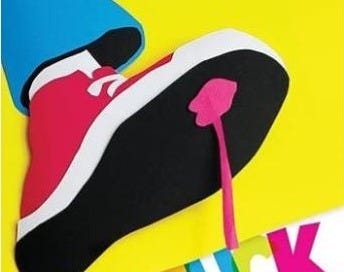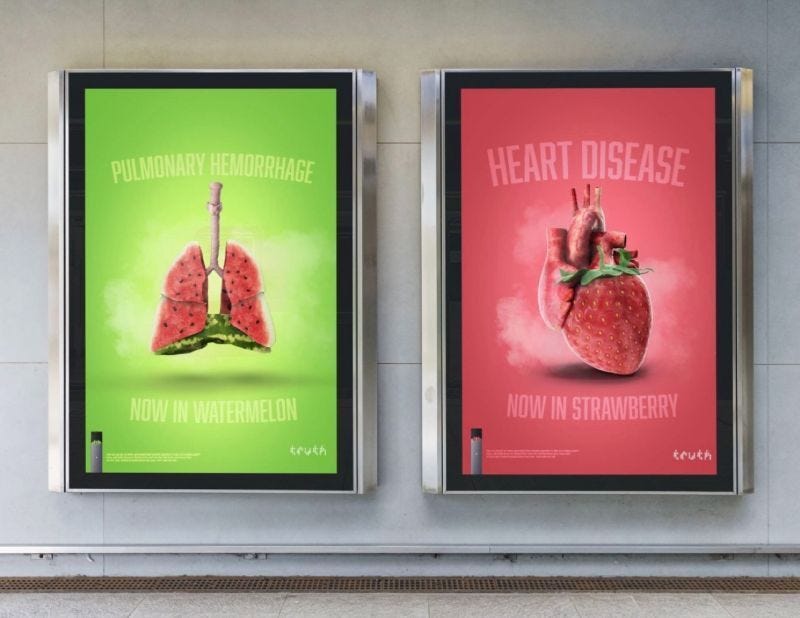5 Campaigns That Unstuck Creativity
When brands stop playing it safe and start living the truth
We've all been there. Staring at a creative brief to create yet another forgettable campaign that checks all the boxes but moves absolutely no one.
But here's what I've learned after years of watching brands play it painfully safe: creativity isn't stuck because we lack ideas. It's stuck because we're terrified of having an opinion, suffocating under layers of "brand safety" guidelines.
When I get stuck, sucked into boring briefs masked as consumer data, I remove myself from brainstorms, from boardrooms and just go back to looking for good old inspiration.
Most of the time this inspiration comes from asking a revolutionary question: "What if we just told the truth?".
My Unstuck Journal
I’ve created a repository of brands that do just that, the few rebels are out there that dare to do something radical, that a re bold enough to be human. This I call my ‘Unstuck Journal’ for when I hit a creative block.
Here are five campaigns from that journal that show us exactly how to unstuck creativity when everyone else is playing it safe.
1. Truth Anti-Smoking: When Fruit Becomes Fatal
The Campaign: "Pulmonary Hemorrhage: Now in Watermelon" and "Heart Disease: Now in Strawberry"
Most anti-smoking campaigns scream at you with blackened lungs and cancer statistics. Truth took a completely different approach: they made vaping's sweet flavors look sinister by pairing them with the diseases they cause.
Why It's Genius:
This campaign works because it exploits a massive cognitive dissonance. Vaping companies spend millions making their products seem innocent - fruity, fun, harmless. Truth simply held up a mirror and said, "Let's call this what it really is."
The brilliance lies in the contrast. The vibrant, appealing colors and the clean, almost appetizing design language directly clash with the brutal medical terminology. Your brain can't reconcile "strawberry" with "heart disease," and that discomfort is exactly the point.
The Strategic Truth: People had become immune to shock tactics. So instead of showing more graphic images, Truth showed the absurdity of the situation. They didn't need to scare people—they just needed to make them think.
2. IKEA's Lamp Ad: The Psychology of Letting Go
The Campaign: The famous "Lamp" commercial that follows the Acknowledge → Break → Reframe formula.
IKEA noticed something profound: Americans upgrade their clothes constantly but cling to old furniture for decades. The emotional attachment to objects was literally costing them sales.
Why It's Genius:
This isn't an ad about furniture—it's about human psychology. IKEA understood that their biggest competitor wasn't another furniture store; it was our emotional attachment to our existing stuff.
The genius is in the three-step process:
Acknowledge: Let people feel empathy for the old lamp
Break: Disrupt that emotion with "You're crazy"
Reframe: Offer the simple truth that "the new one is better"
The campaign forces viewers to confront their own behavior. Yes, you felt bad for an inanimate object, and yes, that's silly when you think about it rationally.
The Strategic Truth: IKEA didn't try to make better furniture ads. They made an ad about why we resist buying new furniture in the first place. They addressed the real barrier, not the imagined one.
3. The Ordinary: Transparency as Brand Strategy
The Campaign: "The Secret Ingredient Store" - stacks of dollar bills showing celebrity endorsement costs
While every beauty brand was desperately chasing influencer partnerships, The Ordinary did something radical: they showed exactly how much celebrity endorsements would cost consumers.
Why It's Genius:
This campaign is pure brand positioning disguised as consumer education. By literally displaying the "celebrity tax" as a pile of money, they're not just explaining their pricing—they're making every competitor's celebrity partnership look like a scam.
The visual impact is immediate and impossible to ignore. That massive pile of cash isn't abstract—it's visceral. You can see exactly what you're paying for when you buy celebrity-endorsed skincare.
The Strategic Truth: The Ordinary realized that in an industry built on aspiration and celebrity worship, radical transparency would be the ultimate differentiator. They turned their "boring" positioning into their strongest asset.
4. Tinder's "EX-press" Truck: Making Breakups Brand-Relevant
The Campaign: The pink garbage truck in Mumbai collecting "emotional baggage"
Tinder could have made another generic "find love" campaign. Instead, they acknowledged a universal truth: before you can find someone new, you need to let go of someone old.
Why It's Genius:
This campaign works because it addresses the real psychological barrier to using a dating app. It's not about features or matching algorithms—it's about emotional readiness.
The execution is brilliant in its simplicity. A literal garbage truck for emotional garbage. The concept is immediately understandable, inherently shareable, and genuinely helpful. It transforms a difficult personal process into a tangible, almost ritual-like action.
The Strategic Truth: Tinder recognized that their biggest competition wasn't other dating apps—it was people's inability to move on from past relationships. They created a solution for a problem they didn't cause but their users desperately needed solved.
5. Subway vs. IKEA: The Art of Playful Provocation
The Campaign: "Meatball Marinara: The Biggest Meatballs on Oxford Street"
When IKEA opened their new London store, Subway didn't ignore it or try to compete on furniture. They leaned into the one thing they could arguably do better: meatballs.
Why It's Genius:
This is newsjacking at its finest. Subway took IKEA's moment and made it about themselves without being bitter or defensive. The tone is playful, confident, and utterly shameless.
The IKEA-style instruction manual format is perfect—it shows they understand the joke while making their own point. They're not taking themselves too seriously, but they're also not backing down from the challenge.
The Strategic Truth: Instead of trying to compete where they couldn't win, Subway found the one intersection where they could credibly claim superiority. They turned someone else's PR moment into their own brand opportunity.
The Pattern That Unsticks Everything
Notice what all these campaigns have in common? They didn't start with creative concepts or viral mechanics. They started with uncomfortable truths:
Truth: "We're marketing poison as candy"
IKEA: "You're emotionally attached to objects"
The Ordinary: "You're paying for celebrity egos"
Tinder: "You're not ready to date"
Subway: "We make better meatballs than a furniture store"
They're observations any honest person would make. The difference is, these brands had the courage to say them out loud.
The Real Creative Block
Here's the thing about creativity, it's usually not stuck because we lack ideas. It's stuck because we lack conviction. We've become so afraid of alienating anyone that we've forgotten how to matter to someone.
The next time you're staring at that blank brief, ask yourself: What truth is everyone in this category afraid to say? What obvious thing is being ignored because it's uncomfortable?
That's where creativity lives.
Stop asking if your idea will offend someone. Start asking if it will matter to the right someone.
Because in a world drowning in content, being inoffensive is the most offensive thing you can be.
I'm Angeline Chandran, a brand strategist who believes creativity dies in committee meetings and lives in uncomfortable truths.
Signing off for 84 Musing









